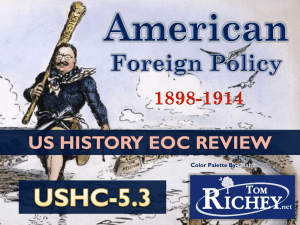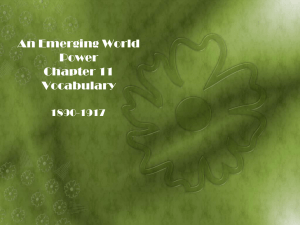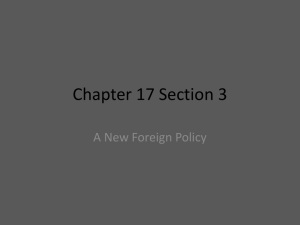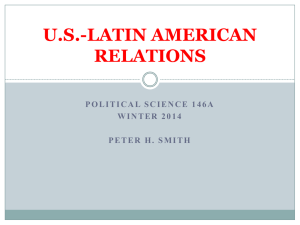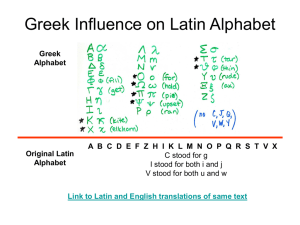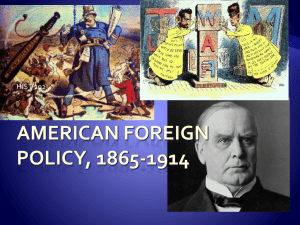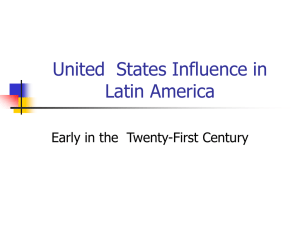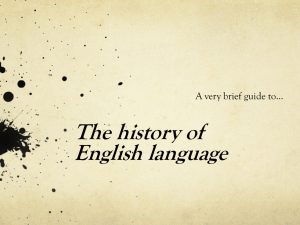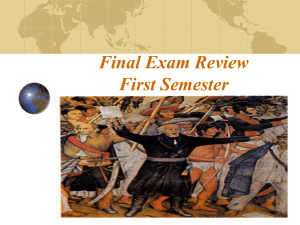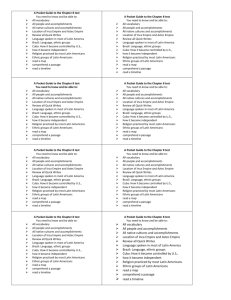U.S. Economic Imperialism in Latin America
advertisement
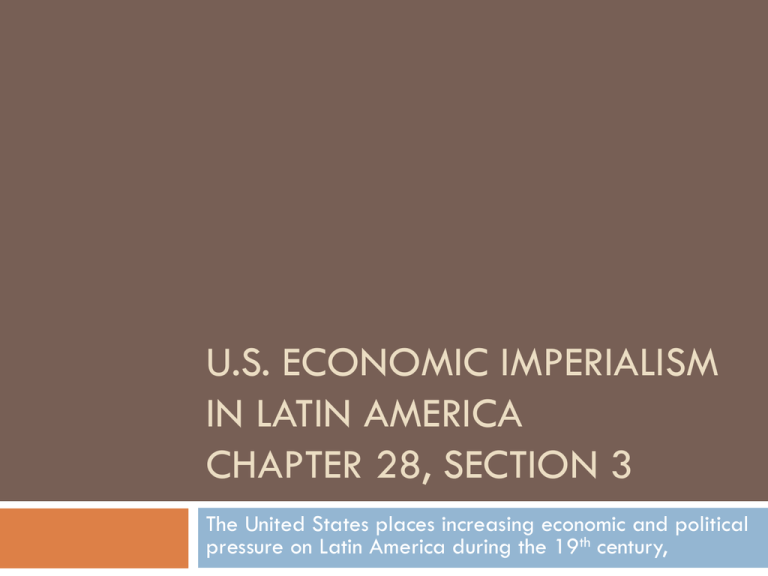
U.S. ECONOMIC IMPERIALISM IN LATIN AMERICA CHAPTER 28, SECTION 3 The United States places increasing economic and political pressure on Latin America during the 19th century, Objectives To explain how Latin America’s colonial legacy and political instability shaped its history after independence To document how foreign powers influenced the growth of Latin American economies To describe U.S. intervention in Latin America Latin America After Independence Colonial Legacy Political gains mean little to desperately poor Latin Americans Peonage systems keeps peasants in debt; landowners grow wealthy Political Instability Caudillos – military dictators – gain and hold power, backed by military By the mid-1800s, caudillos rule in most Latin American countries Reformers sometimes gain office, but eventually are forced out Wealthy landowner support caudillos; poor people have few rights Economies Grow Under Foreign Influence Old Products and New Markets Economies depend on exporting one or two products Trains and refrigeration increase demand for Latin American foods Latin Americans import manufactured goods; industrialization lags Outside Investment and Interference These countries build few schools, roads, hospitals Governments forced to borrow money from other countries Loans not repaid; properties repossessed; foreign control increases A Latin American Empire The Monroe Doctrine Newly independent countries of the Americas are insecure In 1823, U.S. issues Monroe Doctrine – prevent European recolonization of the Americas “the American continents… are henceforth not to be considered as subjects for future colonization by European powers” A Latin American Empire Cuba Declares Independence In 1868, Cuba declares independence, enters 10 year war with Spain and is defeated In 1895, Jose Marti – Cuban – writer launches war for Cuban independence U.S. fights to help Cuba in 1898, leading to Spanish-American War (economic stake) In 1901, Cuba nominally independent; U.S. has significant control After war, Spain gives U.S. Puerto Rico, Guam, the Philippines A Latin American Empire Connecting the Oceans US wants faster way of going from east to west coast by ship President Roosevelt backs idea of building canal across Panama Colombia rejects Roosevelt’s $10 million canal offer In 1903, Panama gains independence from Colombia with US help Panama gives land to US to build canal US builds Panama Canal – waterway connecting Atlantic and Pacific A Latin American Empire The Roosevelt Corollary US bolsters its influence in Latin America through many avenues Many US business investments in Cuba, other countries In 1904, Roosevelt issues update of Monroe Doctrine Roosevelt Corollary – US can be police power in the Americas US uses corollary to justify repeated military interventions
